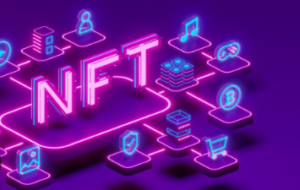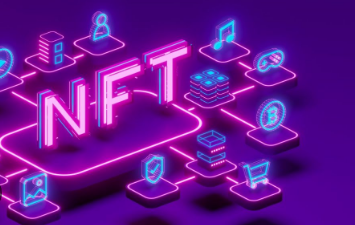How NFTs Are Revolutionizing Digital Art and Ownership: A New Frontier for Makers and Collectors
NFTs are a new class of digital assets now changing how people think about digital art and ownership. They let artists sell and prove the authenticity of their work in a purely digital space. The shift is opening new frontiers for creators and collectors alike, making digital art both more valuable and unique.
Artists are no longer scared of being clobbered into invisibility in a marketplace full of producers. Enabled through NFTs, artists can now reach buyers directly and have more control over their art. Collectors profit, too: they can own, trade, and show the digital pieces in ways they couldn’t before.
This exciting trend does much to enable a vibrant community at the intersection of creativity and technology. With increased mainstream adoption, NFTs are more quickly creating a new paradigm for not just artists but also collectors in pricing and sharing art.
Key Takeaways
- NFTs enable artists to securely sell their work online.
- Collectors will have unique digital items with proof of ownership.
- Emerging opportunities and networks change the landscape for digital art.
The Rise of NFTs in Digital Art
NFTs changed how art was created, sold, and bought in the digital world. The section below provides details on what they are and a little history behind these NFTs, together with the main platforms where artists and collectors interact.
Defining Non-Fungible Tokens (NFTs)
Non-Fungible Tokens, or NFTs, are digital assets with unique ownership verified by blockchain technology. Unlike cryptocurrencies, such as Bitcoin, which are interchangeable, each NFT represents a singular item.
It allows artists to sell their work as digital originals because of this uniqueness. When anyone buys an NFT, he gets proof of ownership. This proof can raise the value of digital art many folds. Thus, in today’s modern world of digital art, the use of NFTs is of great prominence.
History and Emergence of NFTs
NFTs draw their roots from a great deal of early digital art and collectibles. The term “NFT” itself gained favor in 2017 with projects like CryptoPunks and CryptoKitties. These projects enabled users to purchase, sell, and trade unique digital items.
As blockchain became more influential, more and more artists started experimenting with NFTs. In 2021, the first high-profile sale of an NFT happened when Beeple sold a digital artwork for $69 million. It has attracted both the art and general worlds to this phenomenon, and the interest in NFTs keeps growing very fast.
Key Platforms and Marketplaces
A few platforms position themselves in the limelight for NFTs. OpenSea is one of the largest marketplaces of buying and selling NFTs. It boasts a wide variety of digital art, collectibles, and virtual goods.
Other popular platforms include Rarible and Foundation, focused on empowering artists to sell directly to collectors. These sites let creators mint their NFTs with ease and set their prices.
The position has legitimized NFTs further into the art world, with some large auction houses starting to include sales of NFTs, such as Christie’s and Sotheby’s, in an effort to bridge traditional art collectors with digital artists.
Impact on Artists and Collectors
NFTs shift how artists create and sell their work. NFTs change the way collectors acquire and appreciate art. For both groups, opportunity and challenge mark the shift.
Empowering Digital Artists
NFTs provide digital artists with more means of selling their work. Artists can sell their work right to the buyers without the need for galleries or intermediaries to get involved. This direct connection raises their profit and gives them more leeway in pricing.
Many platforms allow artists to set royalties; every time their art resells, they get a share. Basically, this means earnings after sales, which is extremely rare in traditional art markets. Overall, NFTs help artists reach wider audiences much quicker.
Changing the Paradigm of Art Ownership
In reality, NFTs are redefining what art ownership means by adding unique verification. Each one is singular and cannot be copied. Owing to the blockchain technology that gave rise to them, collectors can have absolute ownership of a certain piece.
Ownership history is documented through this technology. This adds value and authenticity to digital art. Up until this point, investors can invest in works that may grow over time. In this way, the traditional definition of ownership is changing quickly.
Building Communities and Networks
NFTs create new communities among artists and collectors. Most forums, exhibitions, and events take place on online platforms. Such gatherings make the connections deeper and allow collaboration.
It is a support network where ideas can be shared and work promoted by the artists. Collectors understand who is up-and-coming and what trends will possibly emerge. This community-based approach lets emerging artists surface and gain momentum. It’s really creating a very lively ecosystem for digital art.

Also Read :
